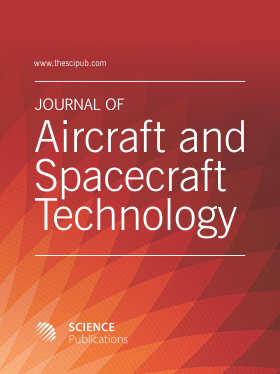History of Aviation-A Short Review
- 1 Bucharest Polytechnic University, Bucharest, Romania
- 2 Second University of Naples, Italy
- 3 American University of Ras Al Khaimah, United Arab Emirates
- 4 Union College, United States
- 5 Bucharest Polytechnic University, Romania
Abstract
The man has always wanted to be able to fly. The dream or although it has achieved, has not been reached yet fully. The fuse of the flight today is much higher than in the past, but is not yet complete. Although they have carried out the steps in the increase of the safety of a ship in flight, there are still many steps to do. For our passengers, but also for our pilots, these brave people and beautiful, it's time to do something in addition, something more. All those who are to get into a ship must be confident that they will fly absolutely without any problems, regardless of the weather, time, climate, brightness, weather conditions, temperature, altitude... In order to achieve a flight higher quality, it is first necessary to know the history of the flight of the man from its inception up today. The present paper wants to present history human flight, as she was in a vision as realistic as possible. The paper is addressed to in the first place to all those who contributed or still contribute to the achievement of this beautiful dream of the man, the flight. According to Aulus Gellius, Archytas philosopher of the old Greek, a mathematician, astronomers, law and political strategist, was considered that has designed and built around 400 B.C., first artificial device of the flight is self-propelled, a model in the form of bird propelled by an steam boost (an engine with the steamer) used as the reactor with steam, about whom they say he flew effectively to about 200 m altitude. This machine, named by its inventor “The Dove”, could be suspended on a wire to fly securely on a path of feed. The inventor of the berbers from the ninth century, Abbas Ibn Firnas, is considered by John Harding to be the first attempt of the flight heavier than air in the history of aviation. In 1010 AD, a British (English) monk, Eilmer of Malmesbury, assumed the piloting of a primitive sliding boat from the Malmesbury Abbey tower. It is said that Eilmer flew over 200 m (180 m) before landing and breaking his legs. He later remarked that the only reason he did not fly further was that he forgot to design his flight instrument and a queue, for which he redesigned his aircraft more technically, but his ancestor took Forbidden any other experiments on the grounds that they are bad (Satanic inspiration) and lead to serious accidents.
DOI: https://doi.org/10.3844/jastsp.2017.30.49

- 7,579 Views
- 8,865 Downloads
- 65 Citations
Download
Keywords
- Aviation History
- The Flight
- History Human Flight
- Fuse of the Flight
- Spacecraft Propulsion
- Chemical Rockets
- Jet Engines
- Satellites
- Electric Propulsion
